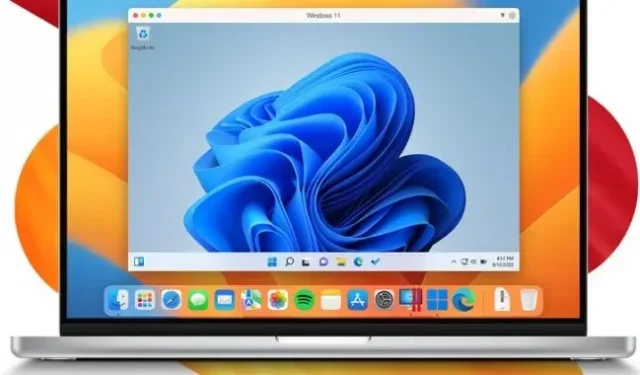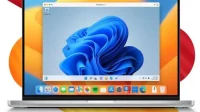In the absence of a version of Boot Camp running on Apple Silicon Macs, the best way to run Windows on them is to use a virtualization application such as Parallels or (more recently) VMware Fusion. The problem is that, until now, the Arm version of Windows running on Apple Silicon Mac computers has technically been unable to run on anything other than the Arm PC that came with it, due to licensing restrictions from Microsoft.
These licensing issues haven’t technically stopped people from running Arm Windows on other hardware, including Apple Silicon Macs and Raspberry Pis, but it can be more of an issue for IT managers who want to deploy Windows to a Mac without worrying about legal liability..
Today, Microsoft officially blesses Parallels as a way to run Windows 11 Professional and Enterprise editions on Apple Silicon Mac computers. Windows running Parallels has some limitations: no support for DirectX 12 or newer versions of OpenGL, no support for Linux or Android subsystems, and several missing security features. But it can run native Windows apps for Arm, as well as x86 32-bit and 64-bit apps, thanks to Windows 11’s code translation features; pretty much anything that isn’t a game should run tolerably given the speed of Apple’s M1 and M2 chip families.
Parallels has been allowing installation of Windows for some time, but has always exploited a loophole in the Windows Insider Program that allowed installation without activation. Starting today, users can run standard versions of Windows 11 Pro and Enterprise with the full support of Microsoft.
For administrators or power users who want a more centralized and easy-to-manage way to deploy Windows to these Macs, or who just want to run Windows without Parallels’ technical limitations, Microsoft recommends using Windows 365 Cloud PC instead. These plans are expensive but save you the hassle of installing and setting up Windows on every Mac you need to run Windows on. They won’t consume as much local disk space or RAM as a virtualized copy of Windows running in Parallels.
Will we ever get Boot Camp for Apple Silicon Mac?
Nothing in today’s disclosure prevents Microsoft from announcing at some distant date that it will allow Windows to run directly on the Apple Silicon Mac. But the technical barriers to running Windows on these Macs remain high, especially given how few users are likely to take advantage of the feature.
Instructive here is the Asahi Linux project. We know from the Asahi team that Apple has no restrictions on the use of third-party operating systems on Apple Silicon Macs. But Apple doesn’t provide any support for their hardware other than this; The Asahi team has been painstakingly building Linux drivers for Apple hardware from scratch for many years, and things like Wi-Fi, audio, and basic graphics acceleration are still a work in progress.
“Apple’s approach to third-party operating systems is basically ‘fun’,”explains Asahi Linux Introduction to Apple Silicon. “We don’t expect them to provide direct support, documentation, or additional development efforts, nor do we expect them to try to interfere with third-party operating systems in any deliberate way. They clearly designed the ability to safely run third party operating systems and boot loaders on these machines and left the rest to us.”
To run a fully functioning copy of Windows on Apple Silicon Macs, someone will need to recreate this driver for Windows as well.
Apple has provided some Windows drivers for Intel Mac computers for components such as mice and trackpads. But because Intel Macs were basically just PCs under the hood, the company could rely on Intel, AMD, Nvidia, Broadcom, and others to actually provide drivers for most of the critical components. This isn’t the case with Apple Silicon Macs, and there really isn’t a good reason why Apple spends time and resources developing and maintaining alternative graphics, network, and chipset drivers just so a handful of users can run a competitor’s operating system.
We asked Microsoft to share something new about running Windows directly on Apple Silicon Mac hardware and will let you know if we hear back. But today’s announcement is another signal that virtualization and cloud computing is the way forward for people who need to run Windows apps on their Macs; if you’re still hoping for the Apple Silicon version of Boot Camp, it’s time to move on.


